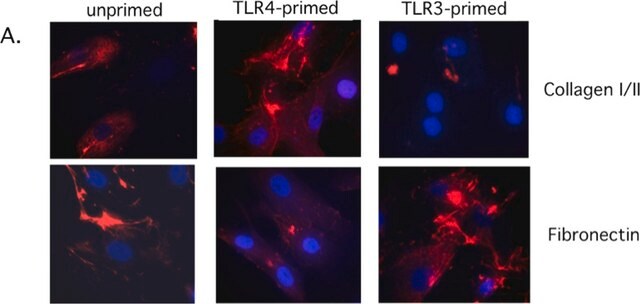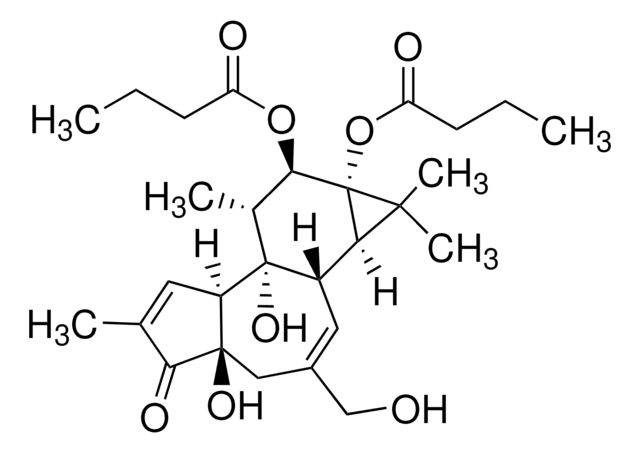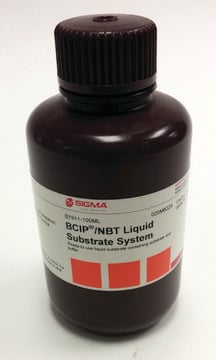A5691
Anti-Actin, α-Smooth Muscle - Alkaline Phosphatase antibody, Mouse monoclonal
clone 1A4, purified from hybridoma cell culture
Synonim(y):
Monoclonal Anti-Actin, α-Smooth Muscle, Monoclonal Anti-Actin, α-Smooth Muscle - Alkaline Phosphatase antibody produced in mouse, SMA
About This Item
pochodzenie biologiczne
mouse
białko sprzężone
alkaline phosphatase conjugate
forma przeciwciała
purified from hybridoma cell culture
rodzaj przeciwciała
primary antibodies
klon
1A4, monoclonal
Postać
buffered aqueous glycerol solution
masa cząsteczkowa
antigen ~42 kDa
reaktywność gatunkowa
human, mouse, rat, chicken, frog, canine, rabbit, guinea pig, goat, bovine, sheep, snake
metody
ELISA: suitable
immunohistochemistry (formalin-fixed, paraffin-embedded sections): 1:20 using human tonsil or appendix sections
western blot: 1:100 using chicken gizzard extract/ Mouse heart extract
izotyp
IgG2a
numer dostępu UniProt
Warunki transportu
wet ice
temp. przechowywania
2-8°C
docelowa modyfikacja potranslacyjna
unmodified
informacje o genach
mouse ... Acta2(11475)
rat ... Acta2(81633)
Szukasz podobnych produktów? Odwiedź Przewodnik dotyczący porównywania produktów
Opis ogólny
Immunogen
Zastosowanie
Immunohistochemistry (1 paper)
IHC analysis of x-gal stained muouse cardiac tissue was performed using the primary antibody, mouse monoclonal anti-smooth muscle actin to identify myofibroblasts.
Postać fizyczna
Inne uwagi
Oświadczenie o zrzeczeniu się odpowiedzialności
Not finding the right product?
Try our Narzędzie selektora produktów.
Kod klasy składowania
10 - Combustible liquids
Klasa zagrożenia wodnego (WGK)
WGK 2
Środki ochrony indywidualnej
Eyeshields, Gloves, multi-purpose combination respirator cartridge (US)
Certyfikaty analizy (CoA)
Poszukaj Certyfikaty analizy (CoA), wpisując numer partii/serii produktów. Numery serii i partii można znaleźć na etykiecie produktu po słowach „seria” lub „partia”.
Masz już ten produkt?
Dokumenty związane z niedawno zakupionymi produktami zostały zamieszczone w Bibliotece dokumentów.
Klienci oglądali również te produkty
Nasz zespół naukowców ma doświadczenie we wszystkich obszarach badań, w tym w naukach przyrodniczych, materiałoznawstwie, syntezie chemicznej, chromatografii, analityce i wielu innych dziedzinach.
Skontaktuj się z zespołem ds. pomocy technicznej



